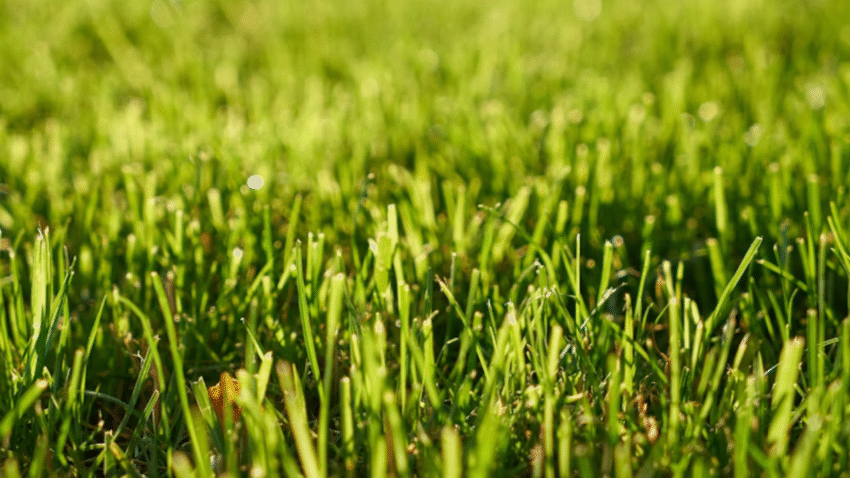Introduction
Does your lawn look patchy, stressed, or dry no matter how often you water? The problem might not be how much you water — but when and how you do it. Learning how to set a watering schedule for your grass type helps you grow strong, healthy turf that resists drought, weeds, and disease. This step-by-step guide will help you understand what your lawn really needs, save water, and get that lush green look all season long.
Why a Proper Watering Schedule Matters for a Healthy Lawn
Different grass types have different water requirements. Cool-season grasses like Kentucky bluegrass or fescue need consistent moisture, while warm-season grasses like Bermuda or Zoysia thrive with less frequent, deeper watering. If you water too shallowly or too often, roots stay near the surface, making your lawn more vulnerable to heat and drought.
A tailored watering schedule encourages deep root growth, healthy soil, and turf that stays green longer, even when rain is scarce. Plus, smart watering conserves resources and lowers your water bill!
Step-by-Step Guide to Setting a Watering Schedule for Your Grass Type
1. Identify Your Grass Type
Start by figuring out what kind of grass you have — or a mix. Common types include:
✅ Cool-Season Grasses (best for northern climates):
- Kentucky bluegrass
- Fine fescue
- Tall fescue
- Perennial ryegrass
✅ Warm-Season Grasses (best for southern climates):
- Bermuda
- Zoysia
- St. Augustine
- Centipede
Your grass type determines how much water it needs and how often.
2. Know How Much Water Your Lawn Needs
Most lawns need about 1 to 1.5 inches of water per week, including rainfall. Cool-season grasses need consistent moisture throughout spring and fall. Warm-season grasses can tolerate dry spells better but benefit from deep watering during active growth in summer.
Rule of thumb:
- Cool-season: water more frequently in summer heat to prevent stress.
- Warm-season: water deeply but less often to encourage drought resistance.
3. Measure How Much Water Your Sprinklers Deliver
Place a few empty tuna cans or rain gauges around your lawn while watering to see how much water your sprinklers put out. Run your system for 15–30 minutes, then measure the depth. This helps you adjust run times to deliver the right amount each week.
4. Schedule Watering Days Based on Grass Type
Here’s a general guide:
Cool-Season Grasses:
- Water 2–3 times per week in hot months to reach 1–1.5 inches total.
- Water once a week or every 10–14 days in cooler months if rainfall is scarce.
Warm-Season Grasses:
- Water once or twice a week during peak summer to reach 1–1.25 inches total.
- Many warm-season grasses can go dormant during drought and green up again when rain returns.
Tip: Always adjust based on rainfall. If you’ve had a soaking rain, skip a scheduled watering.
5. Water Early in the Morning
The best time to water is between 4 AM and 9 AM. This reduces evaporation and gives grass time to dry during the day, helping prevent fungal diseases. Avoid watering at night — wet grass overnight is a breeding ground for lawn fungi.
6. Water Deeply, Not Shallowly
Shallow, daily watering only encourages roots to stay near the surface. Water deeply enough to moisten soil to a depth of 6–8 inches. This helps roots grow deeper, making your lawn more drought-resistant.
7. Adjust for Slopes and Shady Areas
Sloped lawns may need shorter, repeated cycles to prevent runoff. Shady areas typically need less water than sunny spots because they lose less moisture. Don’t overwater shady zones — it can lead to moss and fungal growth.
8. Check for Signs You’re Over or Under-Watering
Signs of under-watering:
- Grass doesn’t bounce back after you walk on it (footprints stay).
- Grass blades look blue-gray and wilted.
Signs of over-watering:
- Mushy soil, yellowing grass, or fungus problems.
- Excessive water runoff.
Adjust your watering times if you notice these signs.
Common Mistakes to Avoid
Mistake 1: Watering Too Often and Too Shallowly
Solution: Water deeply and less frequently to train your grass roots to grow down where they can find moisture.
Mistake 2: Watering at Night
Solution: Always water early in the morning to reduce evaporation and prevent lawn diseases.
Mistake 3: Ignoring Rainfall
Solution: Use a rain gauge or moisture meter. If your lawn gets enough rain, skip watering — don’t waste water or drown your grass.
Mistake 4: Using the Same Schedule for All Lawn Areas
Solution: Adjust for sun exposure, slopes, and different grass types if you have a mixed lawn.
Mistake 5: Not Calibrating Your Sprinkler System
Solution: Test your sprinklers to make sure they deliver the right amount. Broken heads or poor coverage waste water and leave dry patches.
Extra Lawn Care Tips & Hacks
✅ Install Smart Timers: Use a smart irrigation controller that adjusts watering automatically based on weather conditions.
✅ Mulch Lawn Edges: Add mulch or edging around beds to prevent runoff and keep moisture where your grass needs it.
✅ Aerate for Better Absorption: Aerating once a year helps water reach roots instead of running off compacted soil.
💡 Related read: Check out our guide on [how to aerate your lawn properly] for healthier roots and better water absorption.
Conclusion
Setting a watering schedule that matches your grass type is one of the smartest moves you can make for a healthy, green lawn. By watering deeply and consistently, adjusting for rainfall, and timing your watering for early mornings, you’ll build deep roots, reduce stress, and enjoy beautiful turf that stands up to heat and drought.
Bookmark this guide, tailor your watering habits to your grass type, and see how just a few changes can transform your yard — season after season!
